Arthur Szyk
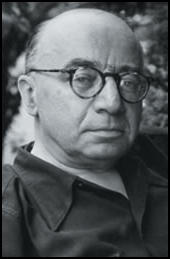
Arthur Szyk was born in Lodz, Poland on 3rd June, 1894. Szyk left home at the age of fifteen to study art in Paris. On the outbreak of the First World War he returned home and joined the Russian Army and later served on the Eastern Front. (1)
After Russia signed the Brest-Litovsk Treaty, Szyk fought in the Polish army against the Red Army. A talented artist, during this period he also produce propaganda art for the cause. (2)
In 1921 Szyk moved to France where he resumed his art studies. Szyk experimented with various contemporary styles before being deeply influenced by the intricate and decorative style of illumination. This resulted in Szyk being commissioned to produce the 45 page Statute of Kalisz, which glorified the 13th century edict granting rights of citizenship to Jews in Poland. Szyk's work included miniature scenes and portraits, illuminated initial letters, decorative and symbolic border patterns and calligraphy. (3)
In 1931 Szyk was commissioned by the League of Nations to illuminate its charter. (4) According to Time Magazine, "Szyk, a round, bouncy little man with thin brown hair and thick glasses, thinks his most interesting project was the 38 miniatures of George Washington and His Times, which he finished in 1935." (5)
Arthur Szyk & Adolf Hitler
Arthur Szyk became a strong opponent of Adolf Hitler and his regime in Nazi Germany. He was quoted as saying "I am but a Jew praying in art" and "art is not my aim, it is my means." He later said: "An artist, and especially a Jewish artist, cannot be neutral in these times.... Our life is involved in a terrible tragedy, and I am resolved to serve my people with all my art, with all my talent, with all my knowledge." (6)
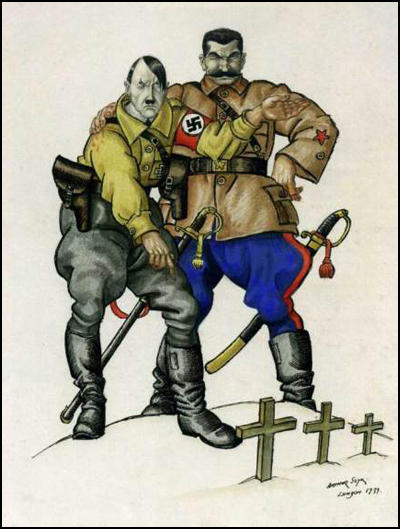
On 19th May, 1939, Neville Chamberlain made it clear that he was unwilling to form an alliance with the Soviet Union. Stalin now realized that war with Germany was inevitable. However, to have any chance of victory he needed time to build up his armed forces. The only way he could obtain time was to do a deal with Hitler. Stalin was convinced that Hitler would not be foolish enough to fight a war on two fronts. If he could persuade Hitler to sign a peace treaty with the Soviet Union, Germany was likely to invade Western Europe instead.
Joseph Stalin now dismissed Maxim Litvinov, his Jewish Commissar for Foreign Affairs. Litvinov had been closely associated with the Soviet Union's policy of an anti-fascist alliance. Meetings soon took place between Vyacheslav Molotov, Litvinov's replacement and Joachim von Ribbentrop, the German foreign minister. On 28th August, 1939, the Nazi-Soviet Pact was signed in Moscow. Under the terms of the agreement, both countries promised to remain neutral if either country became involved in a war. (7)
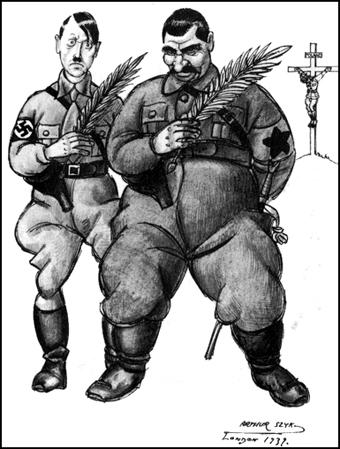
On hearing the news of the German Army invading Poland, Arthur Szyk produced the cartoon, Peace Be With You. Joseph Darracott, the author of A Cartoon War (1989), wrote: "Arthur Szyk's bitter comment on the Russo-German Pact is an admirable example of his meticulous draughtsmanship... Hitler and Stalin are shown holding palms of peace: behind them a soldier hangs on a cross inscribed Poland." (8)
In July 1939 Szyk went to Canada. The Halifax Herald reported that "there is a price on his head and that he is regarded as a dangerous enemy to Germany because of his satirical political cartoons which have appeared in European and North American publications." (9)
The New Order
The following year he moved to the United States, where he attempted to sway public opinion towards invention in the Second World War. He now began to use his considerable skills within the genre of political caricature. (10) Arthur Szyk felt safe in America and commented: "At last, I have found the home I have always searched for. Here I can speak of what my soul feels. There is no other place on earth that gives one the freedom, liberty and justice that America does." According to Steven Heller he raised money for the Chinese and the Czechs, for the displaced Poles and the tattered Brits, and the soldiers of the Commonwealth of Australia and New Zealand." (11)

In January 1940, there was an exhibition of Szyk's work in London. One critic pointed out: "There are three leading motives in the exhibition: the brutality of the Germans – and the more primitive savagery of the Russians, the heroism of the Poles, and the suffering of the Jews. The cumulative effect of the exhibition is immensely powerful because nothing in it appears to be a hasty judgment, but part of the unrelenting pursuit of an evil so firmly grasped that it can be dwelt upon with artistic satisfaction." (12)
An anthology of Szyk's anti-Fascist paintings appeared in his book, The New Order in 1940. According to one critic: "Szyk exploited the grosser virtues of caricature to knock viewers over the head with his point so that no one could get lost in the exquisite details of a drawing, or rather so that people might lose themselves in the details only after having absorbed the main idea." (13)
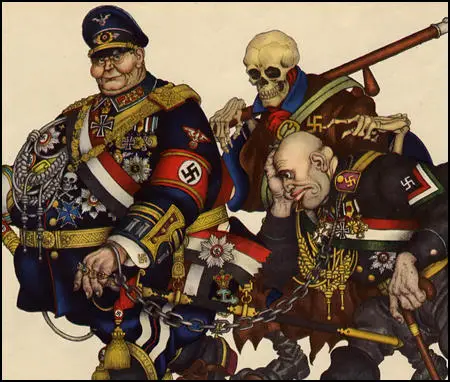
Thomas Craven wrote on the dust jacket of the book, that "Szyk... makes not only cartoons but beautifully composed pictures which suggest, in their curiously decorative quality, the inspired illuminations of the early religious manuscripts. His designs are as compact as a bomb, extraordinarily lucid in statement, firm and incisive in line, and deadly in their characterizations... These are remarkable documents." (14)
One of the most famous paintings was entitled, A Madman's Dream. It included caricatures of Adolf Hitler, Hermann Göring, Heinrich Himmler, Joseph Goebbels, Hideki Tojo, Pierre Laval, Henri-Philippe Pétain and Benito Mussolini. "As well as Hitler seated on the Untermensch rug - while Uncle Sam and John Bull plead in chains - appear (from right) Tojo, a German field marshall, Mussolini (with fan), Göring, Himmler, Laval (with a puppet Pétain) and Goebbels. (The wording on Hitler's throne reads: I am the Holy Ghost.)." (15)
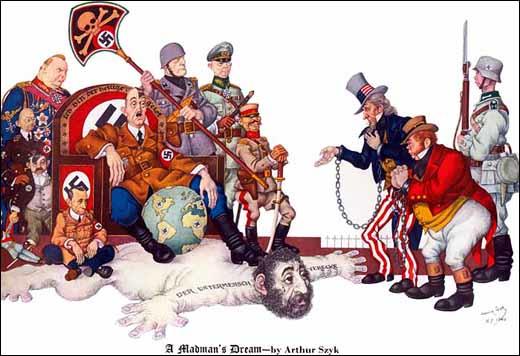
In December, 1940, Arthur Szyk, his wife and daughter moved to New York City. His son, George Szyk, had enlisted in the Free French Forces commanded by General Charles de Gaulle. Szyk became an extremely popular artist after the Japanese attack on Pearl Harbor and the entry of the United States into the war. His work now appeared in a variety of different newspapers and magazines including the New York Post, and the New York Times. (16) He became known as "Franklin Roosevelt's soldier with a pen". (17) His greatest supporter was Eleanor Roosevelt who described him as a "one man army against Hitler." (18)
In November 1941, Arthur Szyk produced a drawing for the front-cover of Collier's. The art critic, Mark Bryant, has argued: "Arthur Szyk's splendid cover for Collier's has Hitler looking worried, his chips dwindling as Death, in an old German uniform, looks on. In his hand he holds only three jokers: Mussolini, Pétain and Tojo, while his puppets, lifeless on the floor, can offer little help. Russia, by contrast, has the blackjack winners, the United States and Great Britain (the V for Victory sign also appears across the top of the cards in Morse Code)." (19)
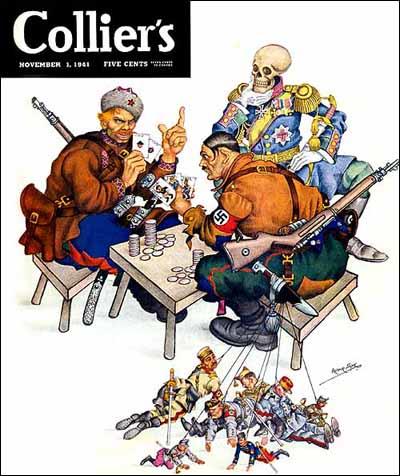
Arthur Szyk produced many cartoons for PM, a daily newspaper based in New York City. (20) Edited by Ralph Ingersoll it had been under attack since it first began publishing on 18th June, 1940. In its first editorial, that appeared on the front page, Ingersoll wrote: "We are against people who push other people around" and demanded support for the Allies in the Second World War. (21)
The newspaper accepted no advertising in an attempt to be free of pressure from business interests. It relied on the financial backing of another supporter of intervention, Marshall Field III. The Reverend Edward Curran, the head of a right-wing pressure group, Christian Front, accused it of being an "atheistic, pro-British, Moscow-inspired propaganda mill." (22)
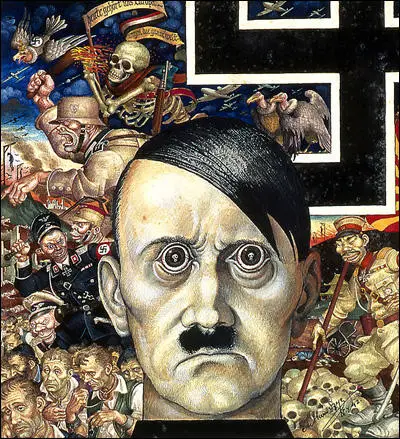
In fact, like Arthur Szyk, the newspaper was hostile to the Communist Party of the United States (CPUSA) because of its support for the Nazi-Soviet Pact. A declassified FBI file claimed that Ingersoll was "probably not a Communist, although he responded to some of the Communists' ideas and associated with Communist sympathizers and some known Communists". (23)
Most of Szyk's cartoons dealt with the plight of the Jews in Europe. This had the full support of Ralph Ingersoll who felt just as strongly about this subject and asserted the newspaper's "policy of aggressive anti-Fascism". He added that the best way this could be achieved was "by aggressive support for England in its war with the Fascist countries." (24)
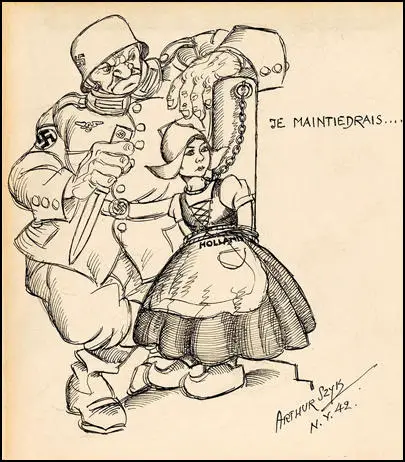
In September 1942, Szyk’s mother and brother were seized from the Lodz ghetto and murdered at Chelmno Extermination Camp. (25) By this time it had become clear that Adolf Hitler was determined to destroy the Jewish community in Europe. (26) In the PM newspaper Szyk produced a series of cartoons on what became known as the Final Solution.
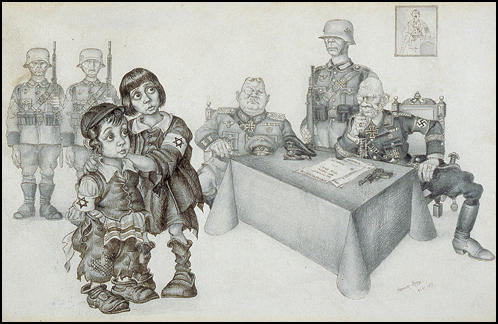
Peter H. Bergson (Hillel Kook) created a series of interlocking organizations, including the Committee for a Jewish Army of Stateless and Palestinian Jews and the American League for a Free Palestine. In July, 1943, Bergson selected Szyk's cartoon, To Be Shot as Dangerous Enemies of the Third Reich to appear on prints and fundraising stamps for his Emergency Committee to Save the Jewish People of Europe. (27)
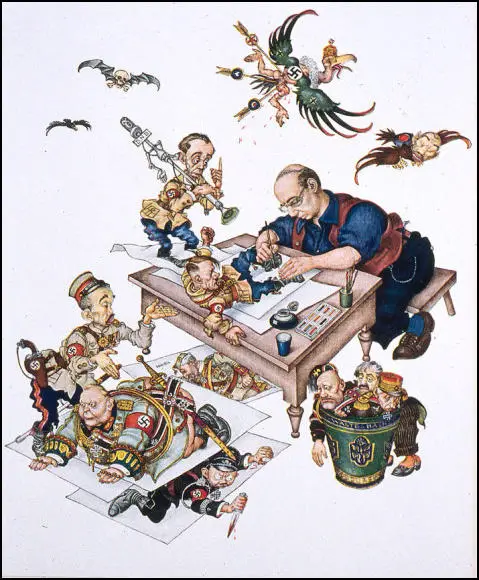
In 1945 Szyk and his family moved from New York City to New Canaan, Connecticut. At first he concentrated on book illustrations. Many of these followed a religious theme including The Book of Job (1946), The Book of Ruth (1947) and The Ten Commandments (1947). He also worked on new editions of classic titles such as The Canterbury Tales and The Arabian Nights. (28)
Civil Rights Campaigner
Richard Z. Chesnoff has described Szyk as a "fervent Zionist Jew" and became a passionate advocate of a Jewish state. It has been claimed that the happiest day in his life was when he heard on 14th May, 1948, the announcement of the Israeli Declaration of Independence. (29)
In the post-war years turned his attention to race relations in the United States. He was one of the first artist's to criticize segregation and other aspects of racism against blacks in the American armed forces. As Steven Heller has pointed out "his art drew attention to the Native American struggle and to the racism directed toward African Americans, and defended the Muslims in Indonesia against the Dutch in 1948." (30)
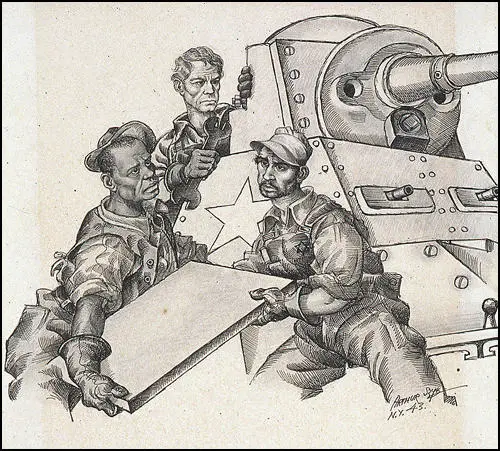
In 1947 the House of Un-American Activities Committee (HUAC) began to investigate communist infiltration in the media. The first ten men accused of being communists: Alvah Bessie, Herbert Biberman, Albert Maltz, Adrian Scott, Samuel Ornitz, Dalton Trumbo, Lester Cole, Edward Dmytryk, John Howard Lawson and Ring Lardner Jr, refused to answer any questions about their political and union activities. Known as the Hollywood Ten, they claimed that the 1st Amendment of the United States Constitution gave them the right to do this. The HUAC and the courts during appeals disagreed and all were found guilty of contempt of Congress and each was sentenced to between six and twelve months in prison. (31)
Victor Navasky, the author of Naming Names (1982) has been pointed out that ten of the nineteen originally named members of the American Communist Party were Jews and two others had been involved in the recent film, Crossfire (1947), that was an attack on anti-Semitism. (32) Arthur Szyk, who was himself a high-profile Jew, and his views on equality brought him to the attention of Joseph McCarthy. (33)
Arthur Szyk reacted to what became known as McCarthyism. In 1949 he drew two men watching a third walk away: “He is under investigation. His blood is red, and his heart is left of the center... To think of it, we are all in trouble.” He also showed his patriotism by producing a "beautifully illuminated version of the Declaration of Independence". (34)
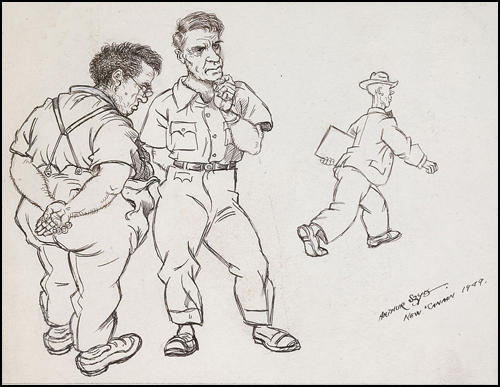
Arthur Szyk, aged 57, died of a heart attack on 13th September, 1951, at his home in New Canaan, Connecticut. (36)
Primary Sources
(1) The Halifax Herald (13th July, 1940)
"When we work for Britain we work for our own country, Britain is the only stronghold of democracy in Europe", said Arthur Szyk famed Polish artist, who arrived yesterday on the same ship which brought more than 800 children from the British Isles...Despite the fact that there is a price on his head and that he is regarded as a dangerous enemy to Germany because of his satrical political cartoons which have appeared in European and North American publications.
(2) Michael Kimmelman, The New York Times (7th September, 2008)
Szyk (it’s pronounced shik) was a Jewish caricaturist who spent roughly the last decade of his life in the United States. He’s unknown here, hardly familiar in America. Born in 1894 in what is now Poland, he fought with the Russian Army on the German front in World War I, then moved during the 1920s to Paris, like many young artists. There he studied at the Académie Julian, declining Modernist abstraction for an old masterly, illuminated-manuscript, miniaturist style of eye-straining detail. Perhaps he was influenced, or fortified, by the “return to order,” as neo-Classicism in that era was called.In any case, from Paris he went to London and onward to New York, having established a reputation with several exhibitions. During the 1940s he became famous as a popular illustrator of books and magazine covers for Time, Collier’s, Esquire and others, and as a political cartoonist for newspapers like The New York Post and PM. Several generations of Americans grew up on his versions of Mother Goose and Andersen’s Fairy Tales. His life’s work, though, was crusading against the Nazis and, later, for Israel and civil rights.
Notwithstanding his influence on comic artists like Art Spiegelman, and the occasional Szyk show, he has pretty much dropped down the memory hole today. Naturally, the show here, introducing him to a German audience, focuses on his antiwar agitprop. There are works about the Holocaust, about Israel and America. Most of the drawings, reproduced magazine covers and other illustrations mock Hitler and Mussolini.
They turn Goebbels into a skunk, Göring into a fat Cossack, the aged Marshal Pétain into Pierrot, the sad clown, and the Japanese into bats and gorillas. To picture his style, think of Mad magazine in the heyday of Will Elder and Harvey Kurtzman but without any sense of humor. Szyk, it seems, had absolutely none.
This inclined him toward cloying kitsch when he extolled Israel, and it produced corn when the subjects were cowboys or George Washington on horseback. Szyk thrived in angry mode, tackling enemies with a sledgehammer, saving subtlety for his penmanship.
In his dexterity he recalls a bygone age of monastic scribes slaving over parchment pages. Illustrations like Fortress Europe, Wagner and Ride of the Valkyries are more intricate than Swiss watch works and sublimely obsessive. Reproductions hardly do the original drawings justice. The wow factor lent weight to his message, never mind if the one actually had nothing to do with the other.
At the same time, however, Szyk exploited the grosser virtues of caricature to knock viewers over the head with his point so that no one could get lost in the exquisite details of a drawing, or rather so that people might lose themselves in the details only after having absorbed the main idea. One of his most potent drawings is The Babykiller (German Airman), a straightforward portrait of a skinny, slouching, vacant-eyed Wehrmacht soldier in an oversize uniform, hands demurely guarding his crotch. It’s the banality of evil personified. In such a case Szyk rose to the level of a Daumier or a Rowlandson.
And times change, along with fortunes. Szyk’s did. In 1949 he drew two men watching a third walk away: “He is under investigation,” the caption says. “His blood is red, and his heart is left of the center. ... To think of it, we are all in trouble....” Two years later, after the House Un-American Activities Committee began a wrongheaded investigation into his possible Communist ties, he died at 57 having just produced the most beautifully illuminated version of the Declaration of Independence, a testament to his patriotism.
Condemning Germans to eternal hell (he inscribed one of his illustrations, about the Polish Ghetto uprising, “to the German people, sons of Cain, be ye damned forever and ever”), he now re-emerges in a Berlin museum of German history. There’s an object lesson in this about the vagaries of life and art. On both sides of the Atlantic, in other words, Vergangenheitsbewältigung still has its benefits.
(3) Mark Bryant, World War II in Cartoons (1982)
A superb characterization by Arthur Szyk (1894-1951) of how Hitler and the Axis powers viewed the New World Order. As well as Hitler seated on the Untermensch rug - while Uncle Sam and John Bull plead in chains - appear (from right) Tojo, a German field marshall, Mussolini (with fan), Göring, Himmler, Laval (with a puppet Pétain) and Goebbels. (The wording on Hitler's throne reads: I am the Holy Ghost.) Szyk, who was born in Poland, fought in the Imperial Russian Army in World War I and worked as a cartoonist in England in 1939 before emigrating to the United States the following year.
(4) The Times (11th January, 1940)
There are three leading motives in the exhibition: the brutality of the Germans – and the more primitive savagery of the Russians, the heroism of the Poles, and the suffering of the Jews. The cumulative effect of the exhibition is immensely powerful because nothing in it appears to be a hasty judgment, but part of the unrelenting pursuit of an evil so firmly grasped that it can be dwelt upon with artistic satisfaction.
(5) Holocaust Encyclopedia (29th December, 2016)
Artist Arthur Szyk (1894–1951) earned an international reputation during his lifetime for his richly detailed illustrations and illuminations of Jewish themes. Szyk was a skillful caricaturist and a passionate crusader for political causes. From his early childhood in the Polish city of Lodz until his death in New Canaan, Connecticut, he drew inspiration from the history of his people. Szyk found strength in biblical stories of Jewish bravery and martyrdom, and in more modern examples of courage.During World War II, Szyk devoted his energies to defeating Nazi Germany and its allies and calling the world’s attention to the mass murder of Europe’s Jews. His incisive wartime cartoons and caricatures filled the pages of American newspapers and magazines, earning him a reputation as a “one-man army” in the Allied cause. His moving portrayals of Jewish suffering and heroism bespoke a political activism that demanded “action - not pity.”
By 1943, Arthur Szyk had become perhaps America’s leading artistic advocate for Jewish rescue from Nazi Europe. His images appeared in leading magazines and newspapers such as Collier’s, Esquire, Time, Look, Liberty, the New York Post, and the Chicago Sun. During the darkest periods of the war, Szyk’s images reached millions of Americans, helping to boost morale by unmasking the threat that Nazism posed to Western civilization.
Student Activities
An Assessment of the Nazi-Soviet Pact (Answer Commentary)
British Newspapers and Adolf Hitler (Answer Commentary)
Heinrich Himmler and the SS (Answer Commentary)
Adolf Hitler's Early Life (Answer Commentary)
Adolf Hitler v John Heartfield (Answer Commentary)
The Hitler Youth (Answer Commentary)
German League of Girls (Answer Commentary)
Night of the Long Knives (Answer Commentary)
The Political Development of Sophie Scholl (Answer Commentary)
The White Rose Anti-Nazi Group (Answer Commentary)
Kristallnacht (Answer Commentary)
Trade Unions in Nazi Germany (Answer Commentary)
Hitler's Volkswagen (The People's Car) (Answer Commentary)
Women in Nazi Germany (Answer Commentary)
The Assassination of Reinhard Heydrich (Answer Commentary)
The Last Days of Adolf Hitler (Answer Commentary)
References
(1) Michael Kimmelman, The New York Times (7th September, 2008)
(2) Christopher Eger, The Martial Art of Arthur Szyk (15th March, 2015)
(3) Steven Heller, Atlantic Magazine (29th May, 2014)
(4) Joseph Darracott, A Cartoon War: World War Two in Cartoons (1989) page 24
(5) Time Magazine (9th September, 1946)
(6) Irvin Ungar, Justice Illuminated: the Art of Arthur Szyk (1998) page 23
(7) A. J. P. Taylor, English History 1914-1945 (1965) page 549
(8) Joseph Darracott, A Cartoon War: World War Two in Cartoons (1989) page 24
(9) The Halifax Herald (13th July, 1940)
(10) Holocaust Encyclopedia (29th December, 2016)
(11) Steven Heller, Atlantic Magazine (29th May, 2014)
(12) The Times (11th January, 1940)
(13) Michael Kimmelman, The New York Times (7th September, 2008)
(14) Thomas Craven, The New Order (1940)
(15) Mark Bryant, World War II in Cartoons (1982) page 46
(16) Irvin Ungar, Justice Illuminated: the Art of Arthur Szyk (1998) page 54
(17) Holocaust Encyclopedia (29th December, 2016)
(18) Richard Z. Chesnoff, Huffington Post (25th May, 2011)
(19) Mark Bryant, World War II in Cartoons (1982) page 71
(20) Irvin Ungar, Justice Illuminated: the Art of Arthur Szyk (1998) page 112
(21) Ralph Ingersoll, PM (18th June, 1940)
(22) Roy Hoopes, Ralph Ingersoll (1985) page 231
(23) FBI file (22nd June, 1940)
(24) Roy Hoopes, Ralph Ingersoll (1985) page 242
(25) Irvin Ungar, Justice Illuminated: the Art of Arthur Szyk (1998) page 103
(26) Lucy S. Dawidowicz, The War Against the Jews (1975) pages 17-19
(27) Irvin Ungar, Justice Illuminated: the Art of Arthur Szyk (1998) page 104
(28) Time Magazine (9th September, 1946)
(29) Richard Z. Chesnoff, Huffington Post (25th May, 2011)
(30) Steven Heller, Atlantic Magazine (29th May, 2014)
(31) David Caute, The Great Fear (1978) pages 490-498
(32) Victor Navasky, Naming Names (1982) page 113
(33) Richard Z. Chesnoff, Huffington Post (25th May, 2011)
(34) Michael Kimmelman, The New York Times (7th September, 2008)
(35) Time Magazine (24th September, 1951)
